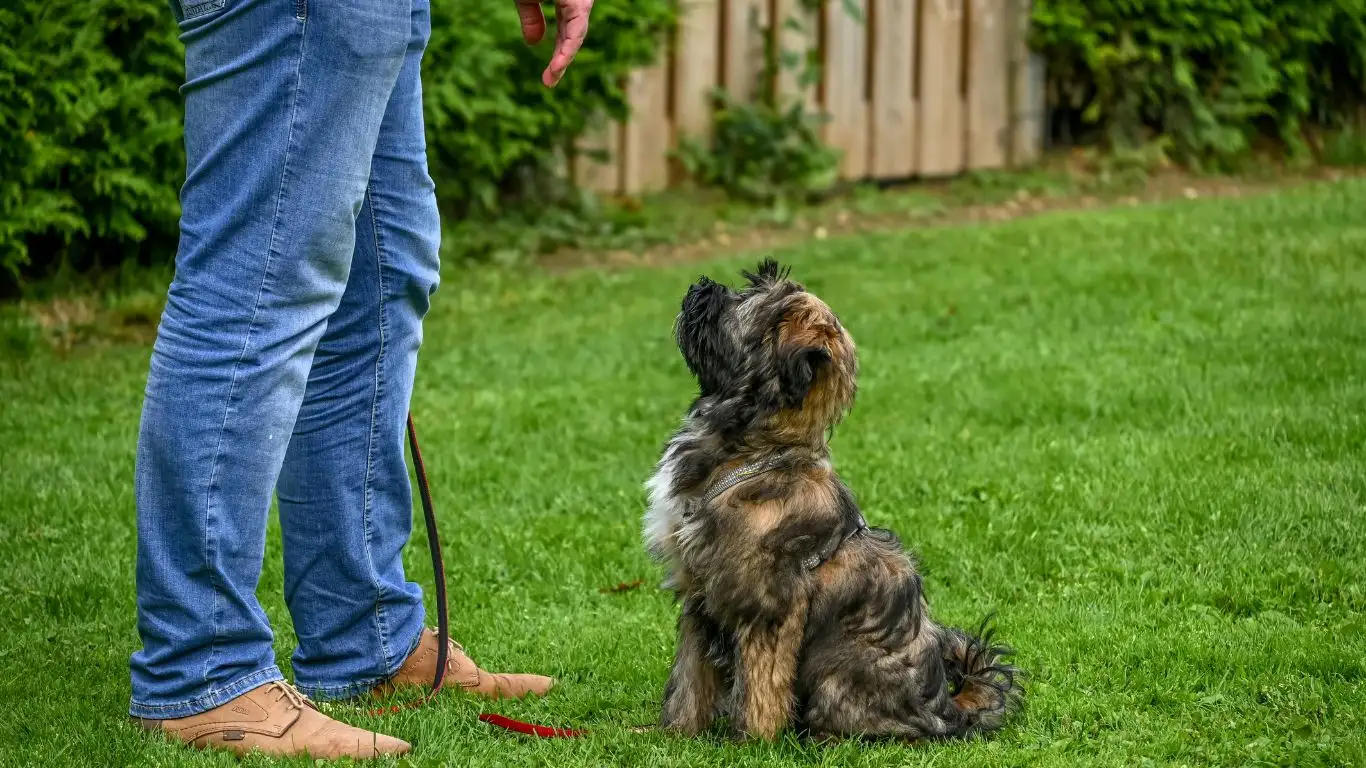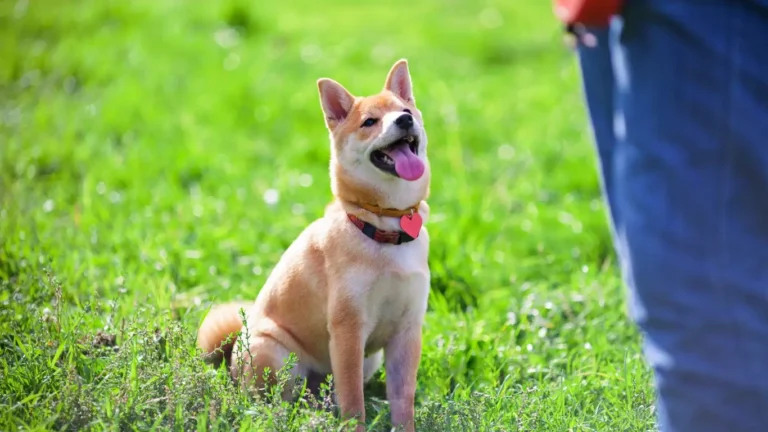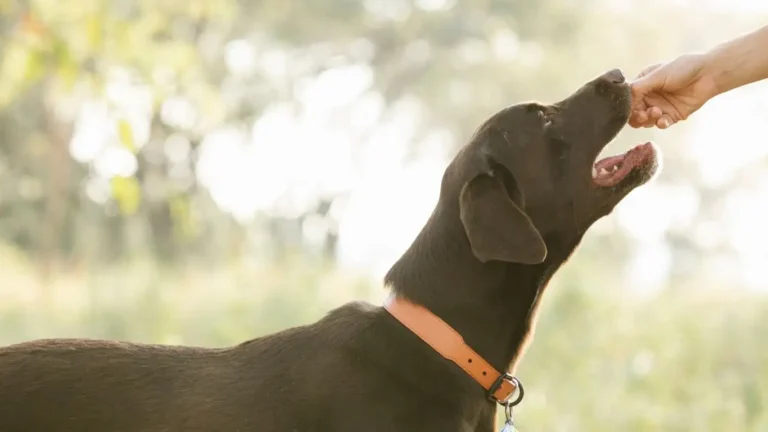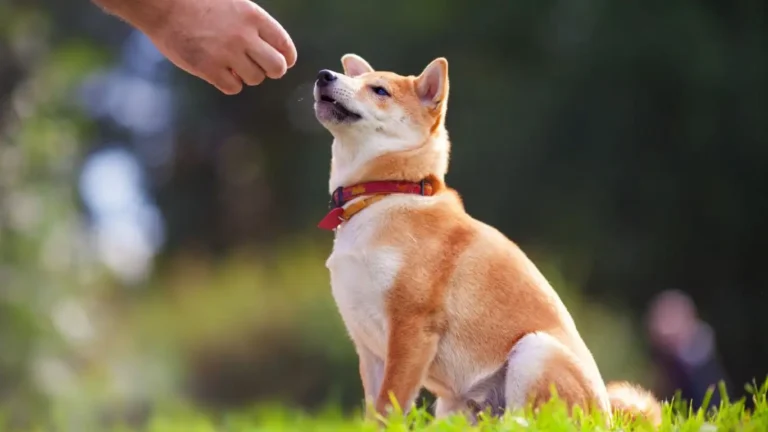How to Train a Dog to Stop Begging for Attention Effectively
As a Certified Professional Dog Trainer (CPDT-KA), I’ve seen it all when it comes to dog behaviors, but one of the most common issues many dog owners struggle with is training their dogs to stop begging for attention. Whether it’s pawing at you during dinner, whining for attention while you’re on the phone, or constantly jumping up on the couch, begging behavior can quickly become a nuisance. However, the good news is that with the right approach, it’s entirely possible to train your dog to stop begging for attention, making life with your furry friend much more peaceful and enjoyable.
Understanding the Root of Begging Behavior

Before you can effectively stop your dog from begging for attention, it’s essential to understand why they do it in the first place. Dogs are incredibly social animals, and they thrive on attention and interaction from their humans. When your dog begs, whether through pawing, whining, or even jumping up on you, they’re often looking for something—be it affection, food, or playtime. Unfortunately, this behavior can quickly become a habit if it’s not managed properly.
From my own experience as a dog trainer, I can tell you that dogs will often beg because they’ve learned that it gets them what they want. For example, if you’ve ever given your dog a treat when they’re sitting at your feet, staring up at you with those big puppy eyes, they’ve learned that begging is a successful strategy. Over time, they’ll repeat this behavior, hoping to get more attention or rewards from you. However, if you don’t take the time to correct this behavior, it can lead to constant begging and frustration for both you and your dog.
Why Begging is Reinforced
One of the key reasons why begging behavior continues is because it’s often unintentionally reinforced. Think about it: when your dog begs, and you respond by giving them attention, even if it’s just a quick pat or a “No, stop,” you’re rewarding them. Dogs don’t always understand the difference between positive and negative attention. In their minds, attention is attention, and they’ll repeat the behavior in hopes of getting more.
The trick here is learning how to avoid reinforcing this begging behavior and instead, teach your dog that it won’t get them what they want. When you start ignoring the begging and providing rewards only for calm, quiet behavior, you’ll begin to notice a change. It’s about being consistent and patient, and trust me, your dog will catch on.
Setting Up a Positive Training Environment

Creating the right environment for training is crucial when it comes to teaching your dog to stop begging for attention. If your dog is constantly bombarded with distractions, such as other people in the room or a tempting piece of food on the counter, it will be much harder for them to focus on the training. You need to set up an environment that minimizes distractions so your dog can focus on what you’re teaching them.
When I work with clients, I recommend starting training sessions in a quiet space, free from distractions. This will help your dog stay focused on you and the task at hand. Once they’ve mastered the behavior in a controlled environment, you can gradually introduce distractions, like other people, noise, or toys, to help generalize the behavior and ensure they can apply it in any setting.
Establishing Consistent Rules
Another crucial element of training your dog to stop begging for attention is consistency. Dogs thrive on routine, and if you’re inconsistent with the rules, your dog will get confused. If one day you give them attention when they beg, but the next day you ignore them, they won’t know what to expect. The key is to be consistent, no matter what.
For example, if you’ve decided that you won’t allow your dog to beg for food at the dinner table, make sure you enforce this rule every time you eat. If they’re not allowed to jump on the couch while you’re sitting there, the same rule applies—always. The more consistent you are, the faster your dog will learn the boundaries, and the quicker the begging behavior will subside.
Redirecting Attention to Positive Behaviors
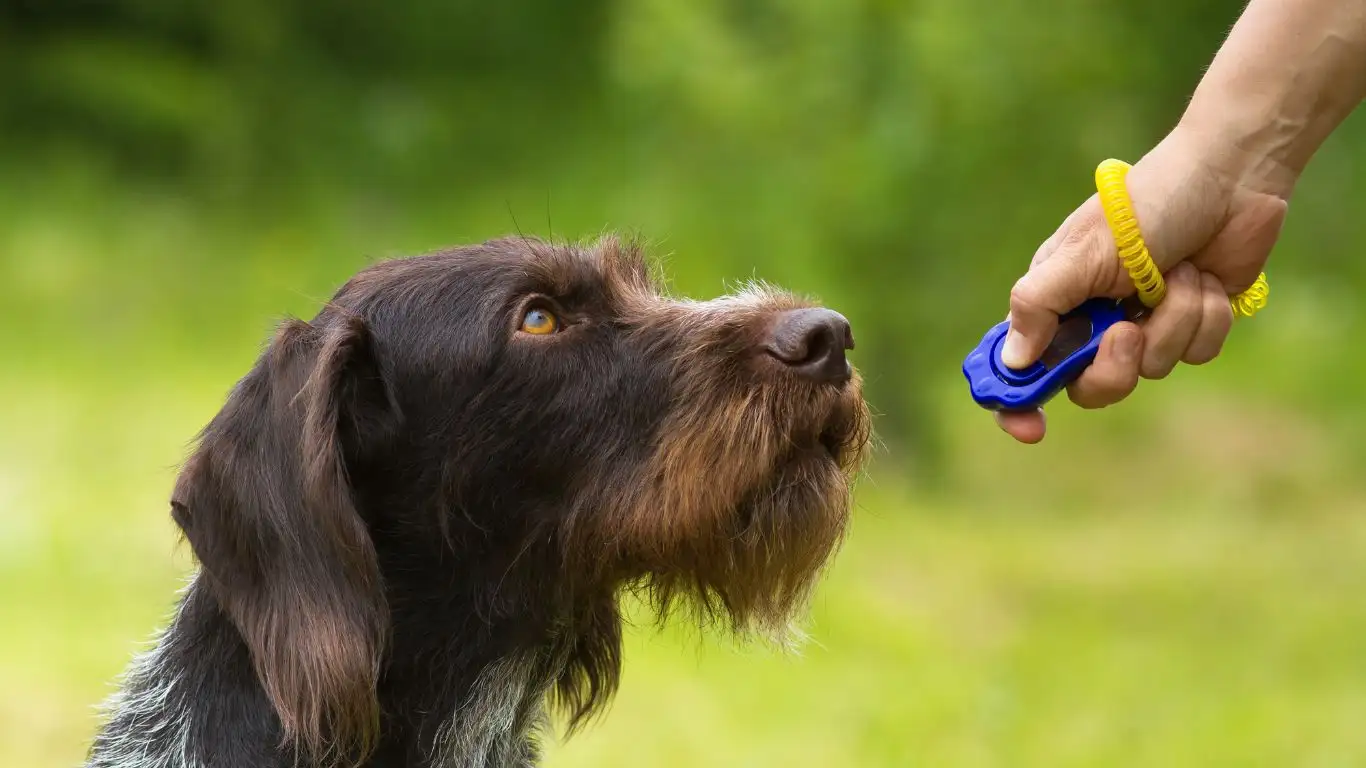
One of the most effective ways to stop your dog from begging for attention is by redirecting their energy toward something positive. This not only discourages the begging behavior but also teaches your dog to engage in more desirable activities.
For instance, when your dog starts begging, instead of giving in to their demands, try redirecting their attention to a toy, a treat puzzle, or even a calm activity like a brief training session. You can say something like, “Go lay down,” and encourage them to settle in their bed. Over time, your dog will begin to associate calm behavior with rewards and attention, rather than begging for food or attention at the wrong times.
Redirecting attention is a powerful tool in your training toolkit. The key is to stay patient and consistent. Dogs learn through repetition, and if you redirect them every time they start begging, they’ll start to understand that begging doesn’t get them what they want, but calm behavior does.
Teaching Your Dog to Respect Boundaries

One of the best ways to prevent your dog from begging for attention is by teaching them to respect boundaries. Dogs love to test limits, especially when they see an opportunity to get something they want, like your attention. Setting clear boundaries is essential for stopping the begging behavior, and it’s something that can be easily achieved with the right approach.
From my experience, I’ve seen that the more you allow your dog to “push” boundaries, the more likely it is that they will continue begging. For example, if your dog knows they can jump on your lap to get attention while you’re eating, they’ll likely do it every time. However, by setting consistent boundaries, like “No dogs on the furniture” or “No begging during mealtime,” your dog will start to understand what’s acceptable and what’s not.
How to Set Effective Boundaries
Setting boundaries doesn’t mean being harsh or overly strict. Instead, it’s about providing your dog with clear, consistent rules they can follow. For instance, if you don’t want your dog to beg at the dinner table, make sure they stay in a designated spot during meal times. Whether that means sitting in their bed or staying in a crate, having a space where they’re comfortable and out of the way helps them learn to relax without the need to beg for attention.
At first, this might seem like a challenge, especially if your dog has already learned that begging gets results. But don’t worry! With enough patience, consistency, and repetition, your dog will eventually start to respect the boundaries you’ve set. Remember, dogs are incredibly smart, and once they know what’s expected of them, they will begin to adjust their behavior accordingly.
Using Positive Reinforcement to Reinforce Good Behavior

Positive reinforcement is one of the most effective methods for teaching your dog to stop begging for attention. This technique works by rewarding your dog for calm, non-begging behavior, which helps them understand that being quiet and patient earns them the attention or reward they’re seeking—without having to beg for it.
Over the years, I’ve found that positive reinforcement is much more effective than punishment-based methods. Punishment can create anxiety or confusion for your dog, whereas rewarding the behaviors you want to see encourages them to repeat those actions. For example, if your dog sits calmly on their bed while you eat, reward them with a treat, affection, or even a quick play session after dinner. This teaches your dog that calm behavior is the key to receiving attention.
When to Reward and How to Be Consistent
It’s important to remember that timing is everything when it comes to positive reinforcement. If your dog is being calm and relaxed, reward them right away so they can connect the reward with their behavior. The reward doesn’t have to be food-based; some dogs respond just as well to praise or playtime, which can be just as motivating as a treat.
Consistency is the name of the game with positive reinforcement. If you give your dog attention or a reward while they’re begging, even once, it can confuse them and slow down the training process. To avoid this, be sure to only reward calm behavior and refrain from giving in to the begging. The more consistent you are with your rewards, the faster your dog will learn that calmness leads to the attention they crave.
Making Use of Timeouts to Curb Begging

Timeouts can be an incredibly effective way to stop begging in its tracks. When your dog begins to beg, whether through whining, pawing, or jumping, removing them from the situation for a brief period of time can help them learn that begging does not lead to any positive outcomes. Timeouts are not meant to punish your dog; rather, they help them understand that begging leads to a loss of access to you and whatever they were hoping to get from the situation.
For example, if your dog is begging for food at the table, you can calmly escort them to a designated timeout area, like their crate or a separate room. Allow them to stay there for a few minutes, and then bring them back to the situation once they’ve calmed down. This interruption helps your dog make the connection between begging and being removed from the environment, which they quickly learn to avoid.
How to Implement Timeouts Effectively
When using timeouts, it’s important to remain calm and neutral. Avoid raising your voice or becoming frustrated—your dog will sense this and may become more anxious, which could worsen the behavior. Instead, simply and calmly guide them to their timeout space. Remember, consistency is key. If your dog begs and you ignore it one time but give them attention the next, they won’t understand why they’re being punished one moment and rewarded the next.
Timeouts should be brief, lasting just a few minutes, as dogs don’t have the same sense of time as humans. Over time, your dog will begin to associate begging with being removed from the situation, and they’ll be more likely to refrain from begging in the future.
Maintaining Consistency in Training

By this point, you’ve set boundaries, redirected attention, used positive reinforcement, and maybe even tried timeouts. But the real secret to success when it comes to training your dog to stop begging for attention is consistency. Training is a process, and for it to stick, it’s crucial to stay consistent every single day. If you’re inconsistent with your approach, your dog will quickly get confused about what behaviors are acceptable.
In my experience as a dog trainer, I’ve seen many well-meaning pet owners slip up when they’re tired, stressed, or distracted. Maybe one night they let their dog sit on the couch during movie night because they feel bad about ignoring their dog all day. Or perhaps they gave in to a little begging during dinner because they didn’t want to hear the whining. These moments, while seemingly innocent, can unintentionally undo weeks or even months of training.
Consistency doesn’t mean being perfect, but it does mean that you make the effort every time. Every time your dog begs, it’s an opportunity to either reinforce good behavior or unintentionally reinforce begging. Stick to your training plan, and eventually, your dog will understand that begging simply doesn’t get them the attention or rewards they seek. It takes time and patience, but it’s worth it in the end.
Tips for Staying Consistent with Your Dog’s Training
- Set a Schedule – Try to train your dog at the same time each day. This helps establish a routine and ensures that your dog gets regular practice.
- Involve the Family – If you live with others, make sure they’re on board with the training plan and are consistent with the rules.
- Keep the Training Positive – Consistency isn’t just about repeating the same thing over and over. It’s also about keeping training sessions enjoyable for your dog. This will help them stay motivated and engaged.
Staying consistent with your dog’s training may feel like a lot of work in the beginning, but trust me, it pays off in the long run. The more consistent you are, the quicker your dog will learn that begging doesn’t get them what they want—and that calm behavior is what earns them the attention and rewards they crave.
Preventing Begging Behavior in the Future

Once your dog has successfully learned how to stop begging for attention, the next step is to prevent the behavior from resurfacing. The last thing you want is to go back to square one after all your hard work. Fortunately, there are several ways to ensure that begging doesn’t become a recurring issue.
One of the most effective ways to prevent begging from starting up again is to keep reinforcing the good behaviors that replaced it. If your dog has learned that sitting calmly in their bed during meal times earns them attention or a treat, continue to reward that behavior. The more consistently you reward calm, respectful behavior, the less likely your dog will be to revert to their old begging habits.
It’s also important to stay vigilant, especially when new situations arise. For example, if you bring a new pet into your home or have guests over for the holidays, your dog might be more inclined to beg for attention. In these situations, continue to enforce the rules and keep training sessions short but frequent to ensure your dog remembers the boundaries they’ve learned.
What to Do if Begging Resurfaces
If, despite your best efforts, begging begins to resurface, don’t worry. It’s normal for dogs to test boundaries from time to time. The key is to stay patient and consistent. Go back to the basics of training, remind your dog of the boundaries, and reintroduce the strategies that worked before. It’s important not to become frustrated, as dogs can sense your emotions, which can make the situation more stressful for both of you.
If you find that the begging is particularly persistent or if you’re struggling to make progress, it might be helpful to consult a professional dog trainer who can offer personalized guidance and support. Sometimes, getting a fresh perspective can make all the difference.
References
For more information on dog training and behavior modification, check out the following resources:
- PawPatron – Expert tips and resources for dog owners.
- American Kennel Club – Dog Training 101 – A comprehensive guide to dog training basics.
- Dogs Trust – Advice on training and behavior for your dog.
Disclaimer
The information provided in this article is based on my personal experience as a Certified Professional Dog Trainer (CPDT-KA) and is intended to offer guidance on how to stop your dog from begging for attention. However, every dog is unique, and results may vary. Always seek professional advice if you have concerns about your dog’s behavior or training needs. The methods described in this article are general recommendations, and it’s essential to tailor your approach based on your dog’s specific temperament and needs.
